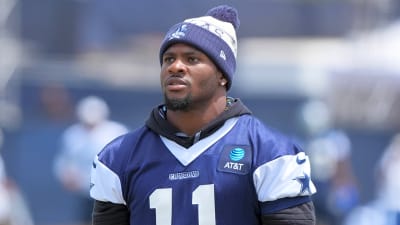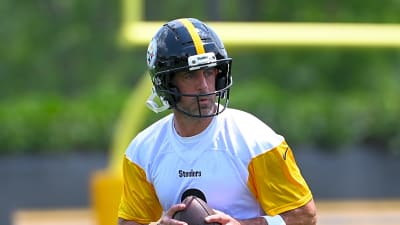
The Boston Celtics have been an offensive juggernaut during Joe Mazzulla’s tenure.
They are the only team in the NBA to rank in the top three in offensive rating in each of the past three seasons, fueled by historically elite halfcourt execution.
The Celtics' half-court offense has been ELITE under Joe Mazzulla.
Half-court OFFRTG + league rank the last 3 seasons:
2022-23: 103.4 (3rd)
2023-24: 106.5 (1st, best in NBA history)
2024-25: 104.1 (3rd)Can they keep dominating next season despite the roster turnover? pic.twitter.com/m7Z2V3ArOb
— SleeperCeltics (@SleeperCeltics) July 16, 2025
But maintaining that level of offensive production in 2025-26 will be a major challenge. Jayson Tatum is expected to miss the season, and four other key rotation players — Jrue Holiday, Kristaps Porzingis, Luke Kornet, and (likely) Al Horford — are no longer on the roster.
Boston now finds itself with its least proven roster in years. Mazzulla and his staff will need to adapt to this new reality.
This version of the Celtics may lack high-end shot creators and playmakers, but it boasts something else: athleticism. With speed, strength, and length across the roster, Boston has a chance to tap into a style of play it’s lacked for nearly a decade— transition offense.
And with the lessened expectations entering next season, there’s never been a better time to experiment.
The Slow Grind
Halfcourt dominance has been Boston’s identity under Mazzulla. According to Cleaning the Glass, the Celtics posted the highest half-court offensive rating on record (106.5) during their 2024 championship run.
While the recipe has been mightily successful the past few years, it has steered the Celtics away from running in transition. Their pace declined in each of the past three seasons, bottoming out at 29th in pace and 30th in transition frequency in 2025.
Celtics' pace in each of the past three seasons, and where they ranked in the NBA (per https://t.co/wfhXXDxPhE):
2023 – 99.15 (20th)
2024 – 97.98 (19th)
2025 – 96.59 (29th) https://t.co/Fy8P1pwpsc— SleeperCeltics (@SleeperCeltics) July 21, 2025
#TBT to a young Coach Mazzulla at the Expo back in 2016.
#BleedGreen pic.twitter.com/4CPXp3DYnW
— Maine Celtics (@MaineCeltics) October 20, 2022
Slowing things down has worked for the Celtics, given their recent years of having elite half-court scorers and decision-makers. With much of that core now gone, it’s unrealistic to expect the same results without adjusting the playstyle.
Playing to the Roster’s Strengths
Celtics president of basketball operations Brad Stevens hinted at a stylistic shift during a recent ESPN appearance.
Brad Stevens acknowledged that the Celtics occasionally fell into the habit of taking turns on offense due to the amount of individual talent they had during his appearance on ESPN the other night.
He said next season they'll have to play more to "each individual's strengths". pic.twitter.com/e1sBvU5usr
— SleeperCeltics (@SleeperCeltics) July 16, 2025
He acknowledged that the team has been able to lean on their stars in recent years, and that next season they’ll need to play more to “each individual’s strengths”.
With fewer creators but more athletes, a faster pace could be the key to maximizing the roster.
Jaylen Brown has long been a top-tier transition scorer. During his All-NBA campaign in 2023, he scored 495 transition points, the third-most in the NBA.
Payton Pritchard earned his nickname “Fast PP” with his change-of-pace capabilities.
Recent draft additions Jordan Walsh and Hugo González bring length, athleticism, and high motors that have flashed in Summer League.
Boston’s current big-man rotation may be unproven, but a transition-centric game could open up opportunities for capable floor-runners like Neemias Queta with his rim-running and Amari Williams’ intriguing playmaking potential.
This Celtics team lacks the polished halfcourt weapons of recent years, but has the raw tools to play faster and manufacture easier offense.
Celtics got one of the best passing big men in college in Amari Williams: pic.twitter.com/MWrmHawumA
— Tomek Kordylewski (@Timi_093) June 27, 2025
The League is Speeding Up
While Boston has slowed down, the rest of the NBA has sped up.
In 2024, the Los Angeles Lakers led all playoff teams in pace at 96.4. Six teams surpassed that number in the 2025 playoffs, including both Finals teams— Oklahoma City (100.03) and Indiana (98.52).
Transition play isn’t a gimmick— it’s a competitive advantage for athletic teams.
Picking up the pace doesn’t mean the Celtics have to abandon their half-court structure— it can complement it. Playing faster could generate easier scoring opportunities, create more semi-transition threes (a Mazzulla staple), and help Jaylen Brown settle more naturally into a lead playmaker role.
Boston doesn’t need to become the fastest team in the league. But developing the ability to play in the open floor could better equip them to keep up with evolving league trends.
A Year to Experiment
For a franchise that’s made the playoffs 11 straight years, 2025-26 will feel unfamiliar. The Celtics likely won’t tank, but they will face lowered expectations.
That opens the door for experimentation:
- See how the roster handles playing with more pace
- Allow a longer leash for the team’s younger players
- Help Jaylen Brown develop as a primary option
- Expand Mazzulla’s coaching identity
Job security shouldn’t be Mazzulla’s primary concern. Stevens confirmed Mazzulla remains under contract for multiple years. With no championship-or-bust pressure, this is a rare opportunity for the Celtics to get creative.
Building for the Future
Jayson Tatum will eventually return, and Boston will resume its pursuit of titles. But even then, the ability to play fast would be a valuable wrinkle to the Celtics’ identity. Tatum himself has been an efficient transition scorer throughout his career.
The 2025-26 season poses an unprecedented opportunity for the Celtics. They should capitalize by developing young talent, test new schemes, and diversify their identity.
Boston has the athleticism to modernize its approach and speed up its game. By doing so now, the Celtics can lay the foundation for a future contender— stronger, faster, and more adaptable than ever before.
More must-reads:
- Surprising update emerges about Jayson Tatum's recovery
- Report: Knicks made a signing based on Giannis Antetokounmpo trade belief
- The 'NBA Summer League MVPs' quiz
Breaking News
Trending News
Customize Your Newsletter
 +
+
Get the latest news and rumors, customized to your favorite sports and teams. Emailed daily. Always free!








